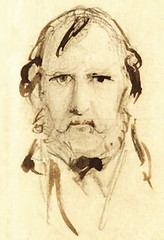
PREV ARTICLE
NEXT ARTICLE
FULL ISSUE
PREV FULL ISSUE
GEORGE CRUIKSHANK'S NOTES
An article by Douglas Mudd of the American Numismatic Association Money Museum in the June 2015 issue of the ANA's publication The Numismatist highlighted the famous satirical banknote produced George Cruikshank in the early 19th century. The article featured some wonderful illustrations. With permission, I'm republishing them here along with an excerpt from the text. Thanks.
-Editor
Adding to this fiscal stress was a law that made forgery punishable by death. The ruling, however, did not differentiate between counterfeit producers, distributors or handlers. Those who were caught with fake currency ... could be executed. The result was a virtual bloodbath. From 1783 to 1797, only four people were prosecuted for forgery, which was considered a white-collar crime. However, from 1797 to 1821, more than 2,000 prosecutions and 300 executions (about one-third of all executions during this period!) were carried out exclusively against members of the working classes. Understandably, this caused public outrage, especially since the Bank of England refused to improve the quality of its notes or change its stance on counterfeiting. The public’s anger was, in part, expressed through caustic cartoons and pamphlets. In 1818 satirical cartoonist George Cruikshank (1792-1878) produced one of the most famous protests in the form of a bank note that lampooned the Bank of England’s paper currency. The Edward C. Rochette Money Museum is fortunate to own a set of documents related to this story, given to the ANA as part of the 1984 J. Roy Pennell donation. It includes the forged note that inspired Cruikshank’s specimen; his satirical creation; his original sketch for the piece; and a copy of an article he wrote in 1876 about his role in ending the injustice during the Bank Restriction period. In the end, the British government rescinded the Bank Restriction Act and resumed specie payments in 1821, making Bank of England notes fully convertible into coin—but only for economic reasons. The severe laws were not changed until 1831, but forgery prosecutions dropped drastically after 1821.
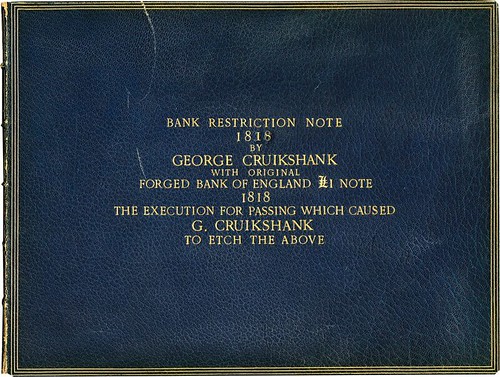
Cover of the Pennell donation
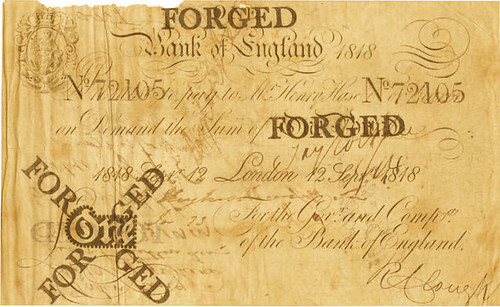
The Forged Note that Inspired Cruikshank's Specimen
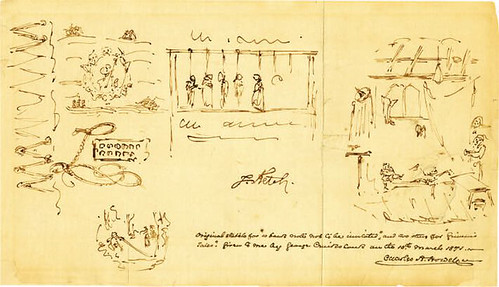
Cruikshank's Original Sketch
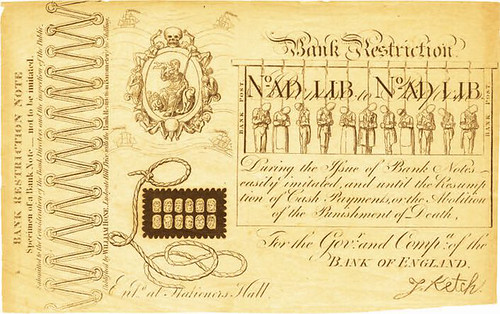
Cruikshank's Note
What an important set of artifacts! ANA members and collectors and researchers everywhere are very fortunate this group of items has survived and is being preserved for future generations. Thanks to Doug for making the notes more widely known. Members should be sure to read the complete article in the June 2015 issue of The Numismatist.
-Editor
For more information on the American Numismatic Association, see:
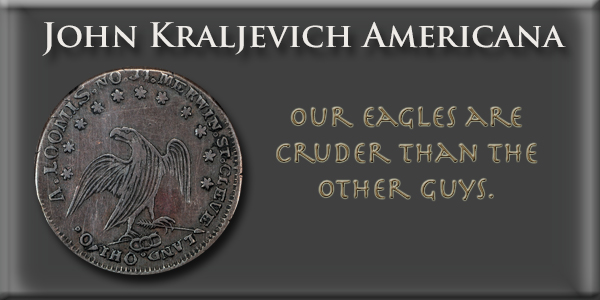
Wayne Homren, Editor The Numismatic Bibliomania Society is a non-profit organization promoting numismatic literature. See our web site at coinbooks.org. To submit items for publication in The E-Sylum, write to the Editor at this address: whomren@gmail.com To subscribe go to: https://my.binhost.com/lists/listinfo/esylum All Rights Reserved. NBS Home Page Contact the NBS webmaster 
|
